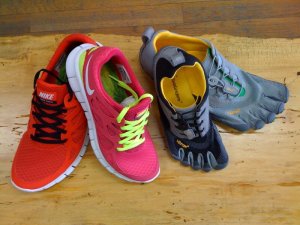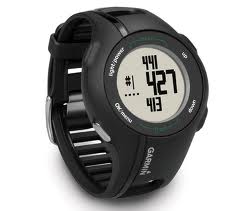 One of the more counter-intuitive aspects of running, particularly long-distance running, is that advances in technology over recent decades have not produced better performances. It’s true that today’s best runners might be able to put more than a mile between themselves and the best runners of the 1970s and 1980s, but it’s also true that Australian Derek Clayton ran a 2:08:34 marathon in 1969, just 33 seconds slower than Stephen Kiprotich’s winning time at the London Olympic Marathon this summer. The world’s fastest runners are faster than they used to be, but that tells you more about the quality of athletes taking up the sport and their training methods than it tells you about the technology present in the sport today.
One of the more counter-intuitive aspects of running, particularly long-distance running, is that advances in technology over recent decades have not produced better performances. It’s true that today’s best runners might be able to put more than a mile between themselves and the best runners of the 1970s and 1980s, but it’s also true that Australian Derek Clayton ran a 2:08:34 marathon in 1969, just 33 seconds slower than Stephen Kiprotich’s winning time at the London Olympic Marathon this summer. The world’s fastest runners are faster than they used to be, but that tells you more about the quality of athletes taking up the sport and their training methods than it tells you about the technology present in the sport today.
It’s common to see runners today training and racing with GPS watches, heart rate monitors, compression socks, shoes designed to perform a specific function, clothing made from special fabrics and astonishingly complex rituals of nutrition. This has helped to preserve a running industry at both the participatory and professional levels, one that might not otherwise exist. However, it’s not hard to see that while technological advances in running might make running more fun, the benefit to performances is debatable.
Consider, for example, the GPS watch. It tells you that your 10k run was actually 9.8 km or maybe 10.27 km. It tells you that you’re running at 9:17/mile and that your fastest pace during your run was 11 mph. There are similar functions performed by cell phone apps of varying accuracy. As accurate as your GPS might be, it has all the functionality of having a car with a very finely-tuned odometer, even though you don’t know what the speed limit is and you don’t even know how to drive. An easy run should feel easy. If it doesn’t feel easy, you’re running too hard. There is, probably, a subset of runners who misjudge their effort and run too hard on easy days, but for anyone who’s that serious about their training, it would be good to learn to gauge pace and effort.

… Any angle of touchdown… A pair of radiused, sliding plates… Horizontal and vertical impact forces to provide comfort and control in all three dimensions… Er, what?
Running shoes, too, became absurdly complex, trying increasingly hard to solve problems that may or may not have existed. The absurdity eventually became obvious to runners, who seem more and more to be wearing lighter, more flexible shoes. However, even on the other end of the spectrum, there’s not much of an edge to be gained by wearing shoes that only rise a certain number of millimeters off of the ground or even in running barefoot.
The same goes for nutrition. Those running half marathons and marathons obsess over their intake of carbohydrates leading up to races, even though the liver can only store a limited amount of carbohydrates, a limit that is typically reached by any balanced diet. Any marginal benefit gained, too, would likely be so small as to be insignificant.
What is instructive is to look at the best in the world, or at least runners who are far superior, who typically keep their running very simple. A look at the training logs of an elite runner will often reveal a schedule that’s written on the basis of time, not distance. Many of east Africa’s world-beating athletes have never run on a rubberized track. In fact, until the well-decorated Olympic champion Kenenisa Bekele built a track using his own money in 2012, there was only one rubberized track in all of Ethiopia, a country that produced four 2:04 marathoners in a single race last month. Instead, intervals are often run based on time, such as 20 repeats of 1 minute hard followed by 1 minute easy.
Clearly, it’s possible to go very far in the sport without ever running on a track, measuring the distance of a run, or even wearing a watch. In fact, it’s what some of the best runners in the world do, such as college cross country teams in the United States (the NCAA cross country championships produce about 250 men who can run 31-32 minutes for 10k on grass, and they typically get there without training on a track) or aspiring professionals in Kenya
So, what can the collective wisdom of thousands of non-GPS-wearing runners tell you?
1) Of course, you don’t need a GPS to train or race.
2) Don’t worry about the small details, such as grams of carbohydrates consumed per day or the weight of your shoes.
3) Time is often a better way to train than distance (e.g. run for 45 minutes, not 8 km).
4) Run slower than you think you should be running, especially on easy days. Few runners make the mistake of running too slow in training, many make the mistake of running too fast, paying for it with sub-par races, inconsistent training, or injuries.
For what it’s worth, my own experience is that I’ve run 36:38 for 10k, 1:21 for a half marathon and stumbled through a 3:10 marathon by only wearing a watch during races and workouts, never eating a single gel and doing intervals and tempos based on time rather than distance.
Adeel Ahmad

